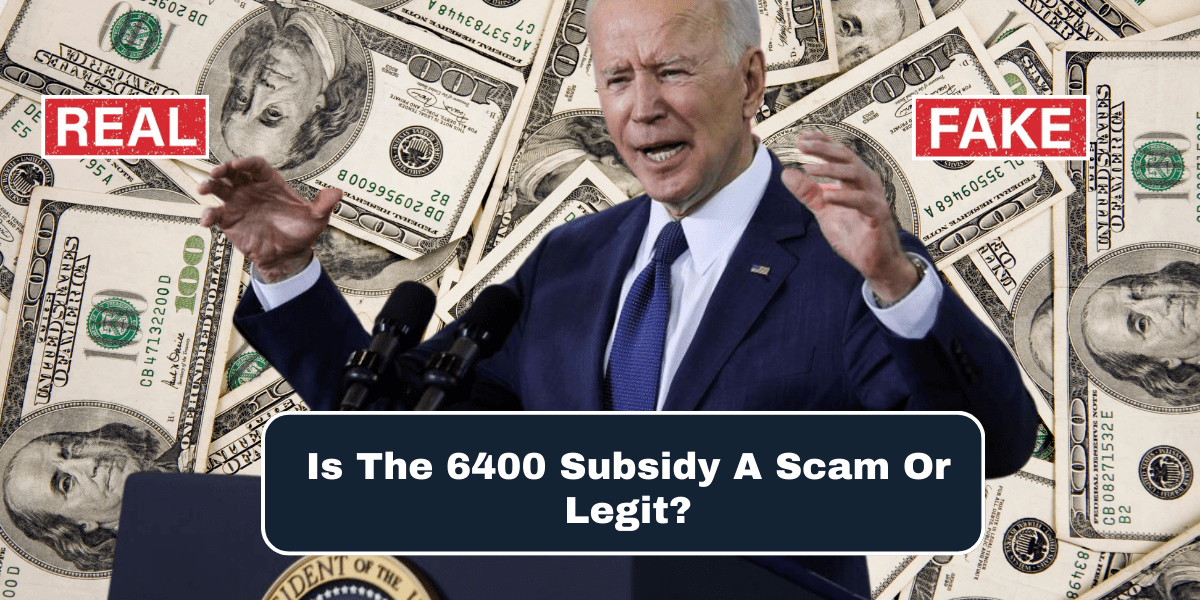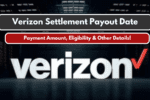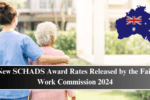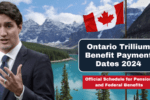Is The 6400 Subsidy A Scam Or Legit? Hey there! Curious about the $6400 subsidy everyone’s talking about? Wondering if it’s real or a scam?
You’re in the right place. This article will help you determine if the $6400 Subsidy is legitimate or fraudulent.
With rising costs, many are seeking government aid for medical services, but scammers are taking advantage of this.
We’ll show you how to spot a fake subsidy and provide details on the $6400 Subsidy Scam. This scam, featuring fake ads and pop-ups with Joe Biden’s image, is designed to steal money and personal information, especially from seniors on Social Security.
Table of Contents
What is a $6400 subsidy?
The $6400 subsidy has become a viral topic online, with a video circulating on Facebook since 2003. In the video, a woman claims to have paid off her medical bills using a government subsidy.
The scammers behind this video offer a hotline number for people to call and claim their subsidies.
However, when users call, they are asked to provide personal information such as card details, government ID, or even a fee as a registration cost to supposedly receive the $6400 subsidy.
How the Scam Works
- Fake Ads: Scammers use ads featuring well-known personalities to look credible.
- Personal Information: They request personal details, claiming it’s for subsidy eligibility verification.
- Targeting Seniors: The scam mainly targets seniors on Social Security, who might be less aware of online fraud.
| $1800 Social Security Payment |
|---|
| $3600 Child Tax Credit 2024 |
| Increase Child Tax Credit To $3000 From $2000 |
| $2000 Child Tax Credit 2024 |
| Facebook Settlement Amount |
Is the $6400 health subsidy Real?
The $6400 subsidy is completely fake and a scam; no government is offering such a subsidy. If you see an ad promising free money or a subsidy, avoid clicking on it. It may look legitimate, but it’s likely designed to steal your money or personal information.
Scammers are deceiving users by promoting fake healthcare subsidy programs on social media, tricking individuals into providing money or personal details.
How did the $6400 subsidy go viral?
Scammers use more than just viral Facebook videos; they also deploy pop-up ads featuring celebrities like Joe Biden and Snoop Dogg to promise subsidies. These AI-generated videos are crafted with high precision, making it tough to discern their authenticity.
These ads are fake, part of sophisticated scams designed to deceive.
Celebrity endorsements, even if AI-generated, add a false sense of legitimacy, increasing the risk of falling victim.
Always be cautious and verify before sharing personal information or making payments. Falling for these scams can result in significant financial and personal harm.
Red Flags Indicating the $6400 Subsidy is a Scam:
- Unofficial Website: The site is not a government (.gov) website or linked to any official health program.
- No Direct Cash Payouts: Government subsidies typically do not provide direct cash. They usually operate through credit systems.
- Absence of Official Announcement: Genuine large subsidies are officially announced by government health programs.
- Pressure to Act Quickly: Scammers may rush you to share personal information. Legitimate processes take time and do not use high-pressure tactics.
How do Government Health Subsidies Work?
It’s important to understand that government health subsidies, such as Medicaid, are intended to assist those in greatest need. These programs have strict eligibility criteria, including factors like age, income, and disabilities.
The application process can be detailed and time-consuming, often taking several months for approval. These programs are designed to offer essential support to those who qualify, ensuring assistance reaches those who truly need it.
How to Protect Yourself From a Scam?
Given the rise of sophisticated digital scams, it’s crucial to safeguard your personal information and finances. Here are some recommended practices to ensure your safety:
- Verify Website Authenticity: Always double-check the legitimacy of a website before providing any personal or financial details.
- Confirm with Official Announcements: Cross-check with official government announcements. Subsidies, whether large or small, are publicly announced with clear eligibility criteria. No legitimate subsidy offers will bypass these criteria.
- Consult Government Contacts: If you know someone working in a government office, ask them to verify the information. They will be knowledgeable about legitimate subsidies.
- Contact Health Services: If you’re uncertain, reach out to health services customer care for confirmation.
- Watch for Pressure Tactics: Be cautious if you’re rushed or pressured. Genuine subsidies involve a thorough process and take time for approval. Any urgency is a red flag for a scam.
What to do if you are scammed?
If you’ve fallen victim to a scam, take these immediate steps to protect yourself:
- Contact Your Bank: Report the scam to your bank and review your account for any unauthorized transactions.
- Review and Update Information: Check your credit card purchases and bank details. If you find any suspicious activity, promptly update your details and change your passwords.
- Seek Reimbursement: Inquire with your bank about the possibility of recovering any funds lost due to fraudulent transactions.
- Report the Scam: File a report with the Federal Trade Commission (FTC) and provide them with details of the scam. This helps prevent others from being affected.
- Exercise Caution: Always be vigilant and double-check information before taking any actions or sharing personal details.
Conclusion
In conclusion, the $6400 subsidy is a scam and not a legitimate government program. Scammers use fake advertisements and celebrity endorsements to lure individuals into providing personal information or money. To protect yourself, always verify the authenticity of financial offers through official government websites like Benefits.gov and GovLoans.gov. If you encounter any suspicious communications or offers, report them to the Federal Trade Commission. Stay cautious and informed to avoid falling victim to such fraudulent schemes.
FAQs
Is the $6400 Subsidy Legit?
No, the $6400 subsidy is a scam. Scammers falsely claim that the government is offering $6400 in health benefits through deceptive ads.
Is the $6400 Subsidy Real?
No, the $6400 health subsidy is not real. Scammers use ads with celebrities to falsely claim they provide $6400 for groceries, rent, and other needs. These are scams.




